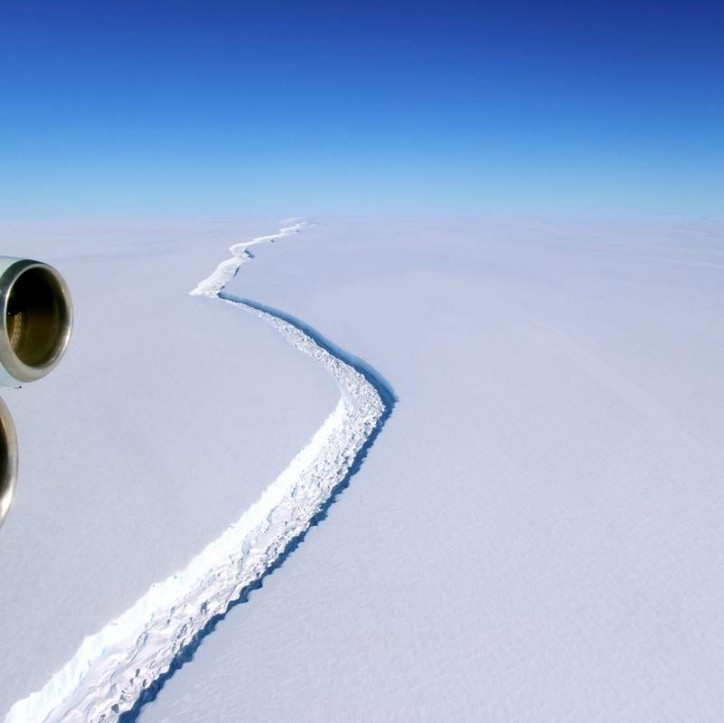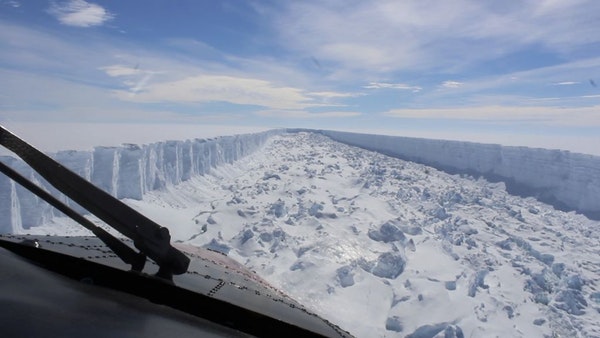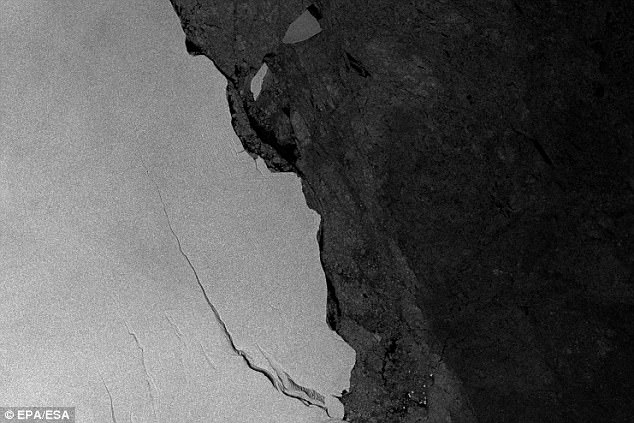A huge iceberg, one of the biggest ever recorded, is about to break off Antarctica.
Part of the Larsen C ice shelf is now hanging by only a relative thread after a crack expanded quickly last month. There is now only about 20 kilometres of ice attaching it to Antarctica – and when it splits off, it will form an iceberg as big as a US state or Trinidad and Tobago.



When that happens, it will radically change the landscape of the Antarctic Peninsula, according to scientists who are tracking it. It could even lead to the wider break-up of the entire shelf, according to a statement from the scientists.
In all, the shelf will shed an area more than 1,930 square miles, scientists from Project Midas at the University of Wales said.
Ice shelves are areas of ice, often huge, floating around on the sea at the end of glaciers.
If they are lost, they could allow those glaciers to slide faster towards the sea as temperatures rise because of global warming. That will help contribute towards rising sea levels and could have catastrophic effects across the world.
Several ice shelves – including Larsen B – have disintegrated in recent years as a result of climate change.
Andrew Fleming, remote sensing manager at the British Antarctic Survey who also tracks the Larsen C, said the ice was being thawed both by warmer air above and by warmer waters below.
In some cases, big icebergs simply float around Antarctica for years, causing little threat to shipping lanes as they melt. More rarely, icebergs drift as far north as South America.
"Larsen B shattered like car safety glass into thousands and thousands of pieces,” he said. “It disappeared in the space of about a week.”
Last year was easily the warmest on record, as a result of greenhouse gases and the El Nino weather event. Changes to sea temperatures and levels are likely to be one of the most significant results of that change, which could in turn bring extreme alterations in the weather.
Source: Independent